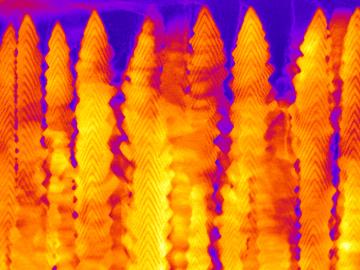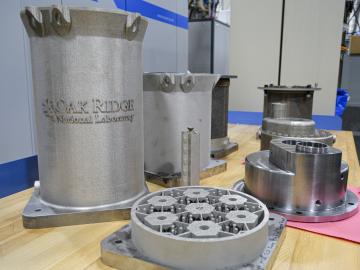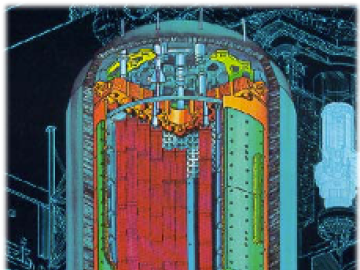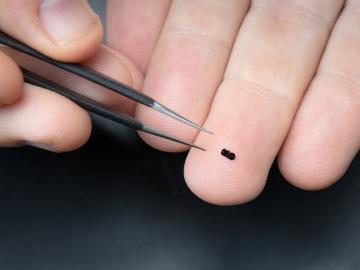
Filter News
Area of Research
- (-) Materials (85)
- (-) Nuclear Science and Technology (16)
- Advanced Manufacturing (1)
- Biology and Environment (49)
- Biology and Soft Matter (1)
- Computational Engineering (1)
- Computer Science (6)
- Electricity and Smart Grid (3)
- Energy Frontier Research Centers (1)
- Energy Science (72)
- Functional Materials for Energy (1)
- Fusion and Fission (10)
- Fusion Energy (7)
- Isotopes (1)
- Materials for Computing (9)
- Mathematics (1)
- National Security (13)
- Neutron Science (24)
- Nuclear Systems Modeling, Simulation and Validation (1)
- Quantum information Science (9)
- Sensors and Controls (1)
- Supercomputing (77)
News Topics
- (-) Advanced Reactors (14)
- (-) Exascale Computing (2)
- (-) Grid (5)
- (-) Molten Salt (7)
- (-) Nanotechnology (39)
- (-) Physics (30)
- (-) Quantum Science (11)
- 3-D Printing/Advanced Manufacturing (26)
- Artificial Intelligence (9)
- Big Data (2)
- Bioenergy (12)
- Biology (4)
- Biomedical (8)
- Buildings (5)
- Chemical Sciences (32)
- Clean Water (3)
- Composites (9)
- Computer Science (19)
- Coronavirus (5)
- Critical Materials (13)
- Cybersecurity (5)
- Energy Storage (34)
- Environment (16)
- Frontier (3)
- Fusion (15)
- High-Performance Computing (4)
- Irradiation (1)
- Isotopes (16)
- ITER (1)
- Machine Learning (5)
- Materials (73)
- Materials Science (79)
- Mathematics (1)
- Microscopy (27)
- National Security (3)
- Neutron Science (38)
- Nuclear Energy (49)
- Partnerships (11)
- Polymers (17)
- Quantum Computing (3)
- Security (2)
- Simulation (1)
- Space Exploration (7)
- Summit (2)
- Transportation (14)
Media Contacts

A team led by the Department of Energy’s Oak Ridge National Laboratory synthesized a tiny structure with high surface area and discovered how its unique architecture drives ions across interfaces to transport energy or information.

Scientists at the Department of Energy Manufacturing Demonstration Facility at ORNL have their eyes on the prize: the Transformational Challenge Reactor, or TCR, a microreactor built using 3D printing and other new approaches that will be up and running by 2023.

Researchers at the Department of Energy’s Oak Ridge National Laboratory are refining their design of a 3D-printed nuclear reactor core, scaling up the additive manufacturing process necessary to build it, and developing methods

In the 1960s, Oak Ridge National Laboratory's four-year Molten Salt Reactor Experiment tested the viability of liquid fuel reactors for commercial power generation. Results from that historic experiment recently became the basis for the first-ever molten salt reactor benchmark.

As a teenager, Kat Royston had a lot of questions. Then an advanced-placement class in physics convinced her all the answers were out there.

A software package, 10 years in the making, that can predict the behavior of nuclear reactors’ cores with stunning accuracy has been licensed commercially for the first time.

Rigoberto “Gobet” Advincula has been named Governor’s Chair of Advanced and Nanostructured Materials at Oak Ridge National Laboratory and the University of Tennessee.

Liam Collins was drawn to study physics to understand “hidden things” and honed his expertise in microscopy so that he could bring them to light.

Scientists at have experimentally demonstrated a novel cryogenic, or low temperature, memory cell circuit design based on coupled arrays of Josephson junctions, a technology that may be faster and more energy efficient than existing memory devices.

As scientists study approaches to best sustain a fusion reactor, a team led by Oak Ridge National Laboratory investigated injecting shattered argon pellets into a super-hot plasma, when needed, to protect the reactor’s interior wall from high-energy runaway electrons.


